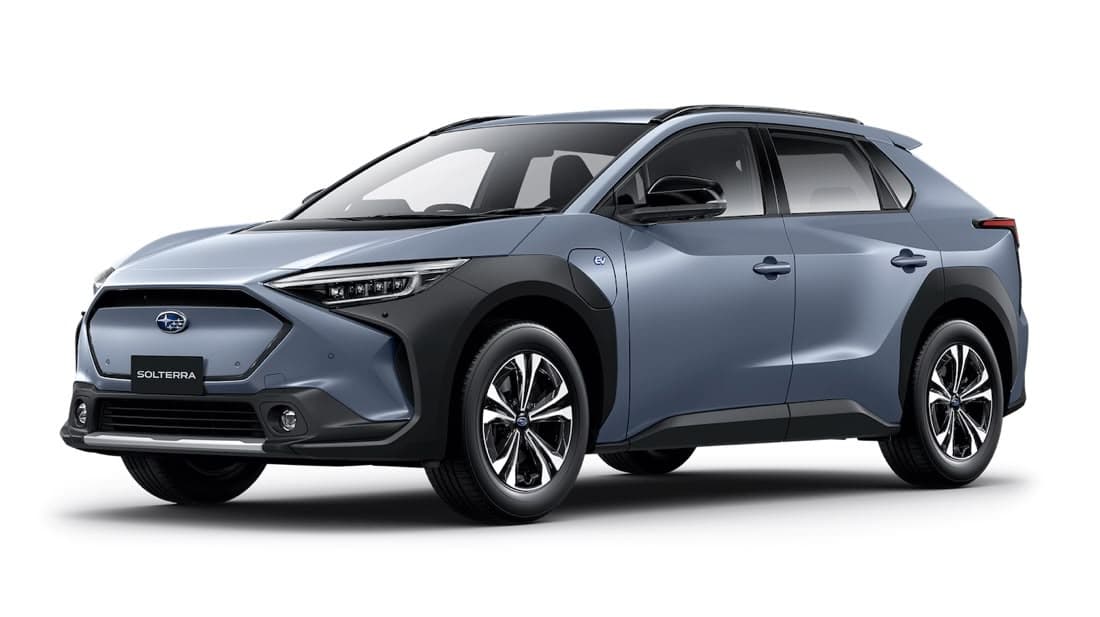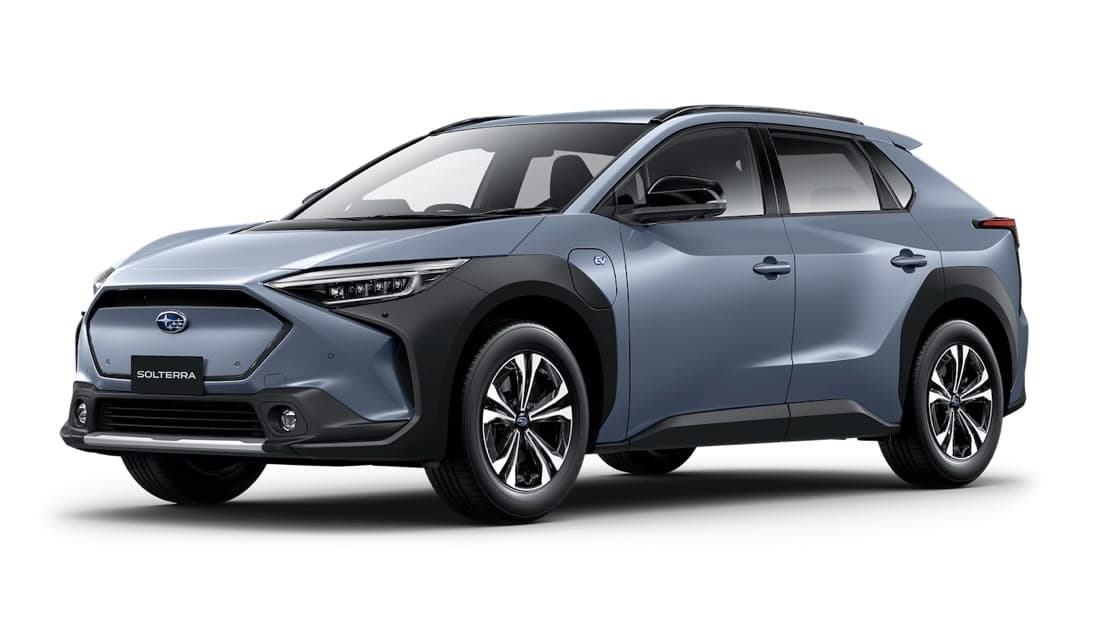Subaru Solterra

Price Range
$79,990 - $84,990
Range (WLTP)
414 - 465 km
Battery Size
71.4 kWh
Variants
The base model Solterra is equipped with All-Wheel Drive and 18" alloy wheels. It has a 10-way power driver's seat, front seat heaters, and a power rear tailgate. Inside, there's a dual-zone A/C system, a 12.3" centre display, and wireless compatibility with Apple Car Play and Android Auto. Additional features include Dual X-MODE, S pedal drive, a cloth interior, and a sound system with six speakers.
Performance
0-100 km/h
6.9 sTotal Power
160 kWTorque
337 NmTop Speed
160 km/hDrive
AWDRange & Efficiency
WLTP Range
465 kmWLTP Consumption
160 Wh/kmHighway Range
363 kmYour Real Range
Calculate Battery & Charging
Battery (nominal)
71.4 kWhBattery (usable)
64 kWhBattery type
NMCAC Charging
6.6 kWDC Charging
150 kWVehicle-to-Load (V2L)
NoDimensions & Weight
Length
4690 mmWidth
1860 mmHeight
1650 mmGround Clearance
210 mmWeight
2085 kgShape
Medium SUVSeats
5Storage & Towing
Boot Space
441 LBoot Space (Max)
784 LFrunk
—Towing (Braked)
750 kgTowing (Unbraked)
750 kgHow many Subaru Solterra have been sold in NZ?
There have been 70 registered to date (all NZ new).
Subaru Solterra registrations
Monthly units (includes new and used import)

